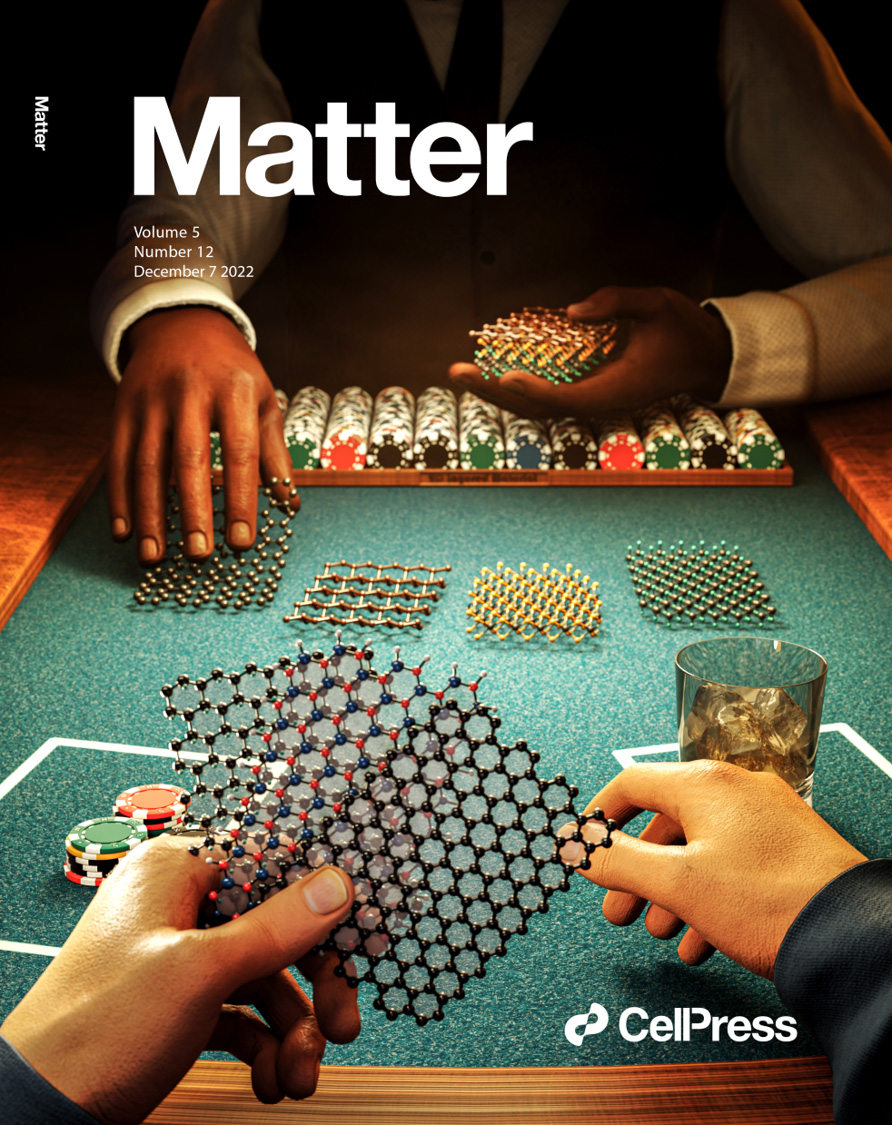WRIGHT-PATTERSON AIR FORCE BASE, Ohio (AFRL) — Air Force Research Laboratory, or AFRL, researcher Dr. Nick Glavin has teamed with academia to guest edit a special edition of the prestigious scientific journal Matter. The January 2023 issue highlights special reports on the development of a new class of materials known as two-dimensional, or 2D, materials and heterostructures.
Glavin, senior materials engineer in the Polymers and Specialty Materials branch of AFRL’s Materials and Manufacturing Directorate, and Dr. SungWoo Nam, associate professor of Mechanical and Aerospace Engineering at the University of California Irvine, also contributed a research article to the special collection titled “2D layered materials and heterostructures: Past, present, and a bright future.” The publication examines the history of 2D-layered materials as well as outlines a path forward for this class of materials.

The second annual special edition of the prestigious scientific journal Matter, published January 2023, features guest editor and contributors from the Air Force Research Laboratory, or AFRL, and the University of California. Dr. Nick Glavin, AFRL senior materials engineer, and Dr. SungWoo Nam, associate professor at the University of California Irvine, guest-edited the issue, which highlights special reports on the development of a new class of materials known as 2D materials and heterostructures. (Courtesy photo)
“In order to understand where we are going, we have to consider where we have been,” Glavin said. “Our job was to frame the history of these [2D-layered materials] and then highlight where they are headed.”
2D materials consist of ultrathin atomic layers measuring 10,000 times thinner than a human hair, allowing scientists and engineers across the globe to develop novel technologies and improve computer systems and sensors, Glavin said. They serve as “building blocks” for engineering properties at the atomic scale, much like Lego bricks. Scientists want to harness the design space of these versatile pieces of matter to integrate advanced technologies into everyday life.
Currently, researchers are rapidly combining materials to form heterostructures, or more complicated 2D-layered structures, just as people stack Lego bricks to construct more complex configurations.

This figure from the article “2D layered materials and heterostructures: Past, present, and a bright future” highlights how 2D-layered materials serve as “building blocks” for engineering properties at the atomic scale. Written by Air Force Research Laboratory researcher Dr. Nick Glavin and University of California Irvine Associate Professor Dr. SungWoo Nam and published in the January 2023 edition of the scientific journal Matter, the article examines the history of 2D-layered materials and outlines a path forward for this class of materials. (Courtesy graphic)
“This edition is not only for the ‘deep science’ community, but also for a broader audience,” Glavin said. “We wanted to make this topic more digestible for people.”
The Matter special issue resulted from Glavin and Nam’s efforts to organize a 2D materials and heterostructure symposium at the Materials Research Society Conference in Boston, Massachusetts in fall 2022.
“I collaborated with [Glavin] to put together this article in Matter . . . to provide our views on past, present and future developments in the field,” Nam said. “I am excited that we were able to put together editorial perspectives on emerging topics in the field of 2D materials and heterostructures and also provide insights on historical perspectives.”
It is only the second time in its history that Matter has published a special edition of this kind.
“Serving as a guest editor to a special issue is a fun process where you can craft what the issue looks like,” Glavin said. “You reach out to experts in the field, suggest a couple of relevant topics, and handle the review and editing process as well. It’s very rewarding.”
The link to Glavin and Nam’s article in Matter is available at: https://authors.elsevier.com/a/1gC-19Cyxc-DnI
About AFRL
The Air Force Research Laboratory, or AFRL, is the primary scientific research and development center for the Department of the Air Force. AFRL plays an integral role in leading the discovery, development, and integration of affordable warfighting technologies for our air, space, and cyberspace force. With a workforce of more than 11,500 across nine technology areas and 40 other operations across the globe, AFRL provides a diverse portfolio of science and technology ranging from fundamental to advanced research and technology development. For more information, visit: www.afresearchlab.com.

